November 3rd Program Summary -- Trilobites: From Cambrian Oceans to West Virginia Collecting Sites, presented by Casper Voogt
by Andy Thompson, MSDC Secretary
Yury Kalish introduced Casper Voogt, MSDC’s well known member and co-webmaster, as well as frequent presenter to our club and to other clubs in the Washington, DC area. Casper joined the November Zoom meeting by logging in from Portugal where he was visiting.
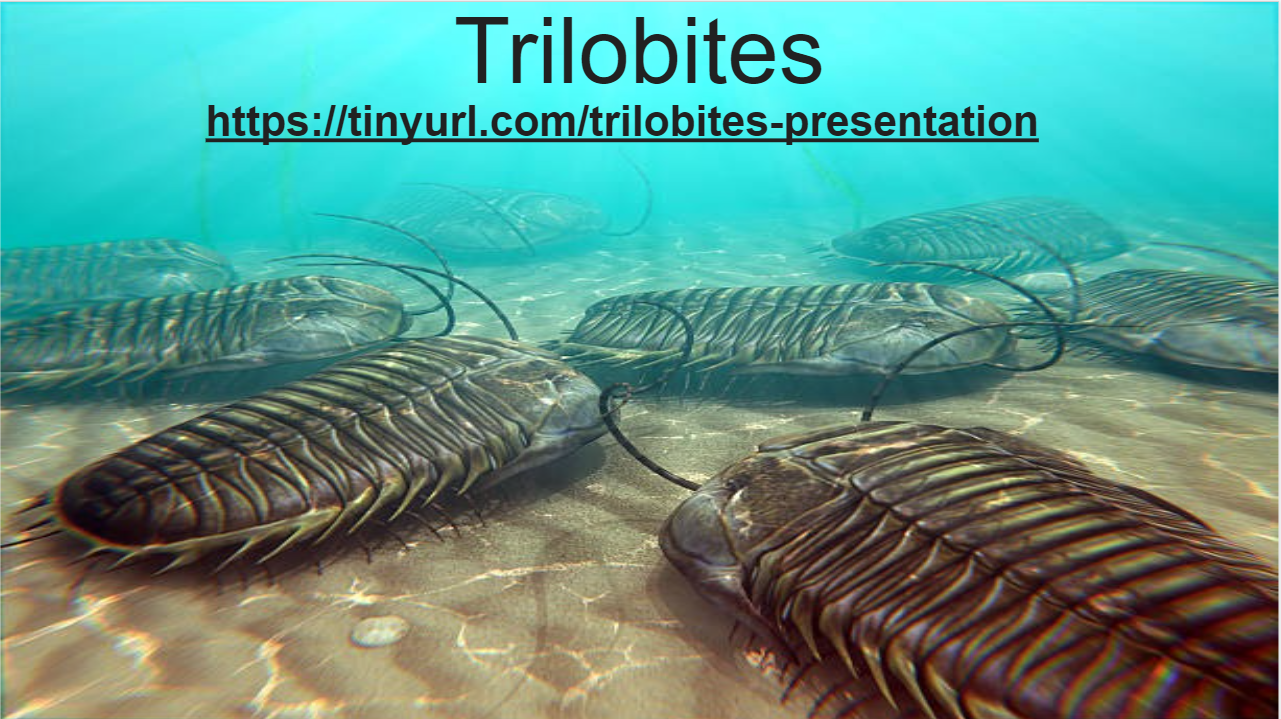
Casper began by describing the importance of trilobite fossils for geologists. With over 50 slides and interesting commentary, he explained that the abundance of the tiny, now-extinct arthropods has been very helpful for geologists by enabling them to date rock strata or layers in which trilobites have been embedded. As noted below, the physical shape and features of trilobites evolved over their long history. So knowing the specifics of that process and the physical characteristics of the trilobites at each stage in their evolution gives geologists clues to help them date the rock formations.
From the Cambrian to the Permian
Trilobites were undoubtedly one of the most successful groups of organisms to live on the Earth. Their evolution was marked by numerous advances and retreats over nearly 300 million years of stratigraphic records in the history of the planet.
Trilobites were abundant at least by the start of the Cambrian time period, about 540 million years ago (mya), and they persisted until the Permian time period’s great extinction about 245 mya. A few earlier specimens have been found dating from about 700 mya but they are rare and not much is known about them.
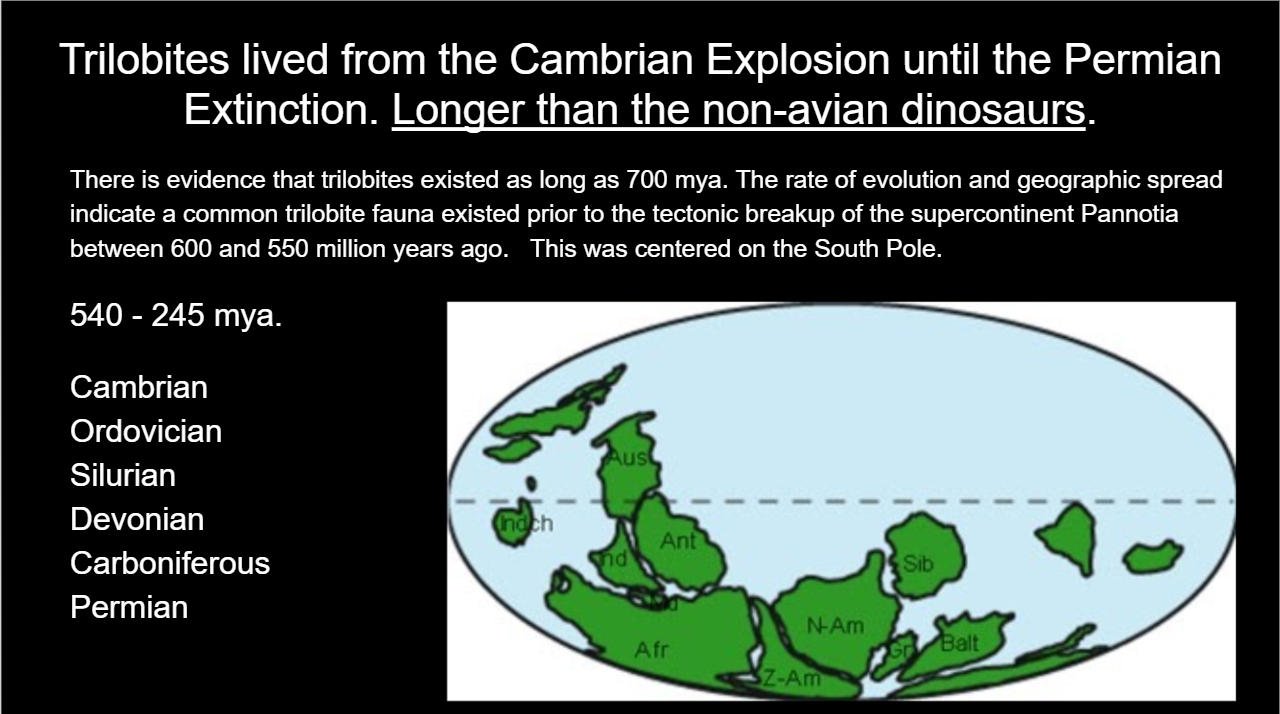

As illustrated above, at the beginning of the Cambrian Period, earth’s tectonic plates were clustered near the south pole and were known as the Pannotia supercontinent. Trilobites lived in the warm and shallow Cambrian oceans of the day. By the start of the Permian Period, almost 300 million years later, earth’s plates had begun separating and shifting toward north toward the equator.
Casper said he has had a special interest in collecting trilobites from the Devonian time period which lasted for about 60 million years from 416 to 358 mya. He has had some success collecting them at a private digging site in West Virginia as explained below.
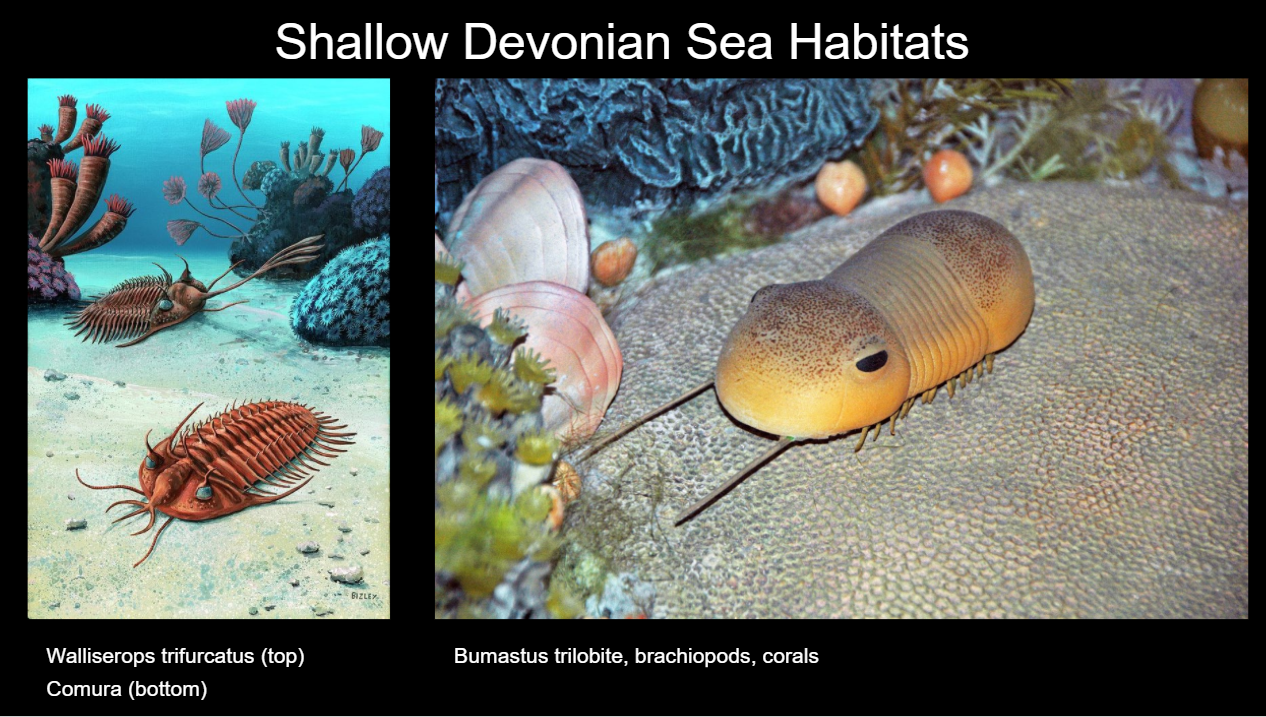
Physical Characteristics
Throughout his presentation, Casper showed illustrations which showed a diverse array of physical changes in the trilobites’ morphology. He suggested those adaptations may have been in response to changes in their shallow sea habitats and also proved useful for defending themselves against their predators’ ever changing hunting competencies.
Their name “trilobite” comes from the three distinct lobes of the length of their body: central, left and right sides as illustrated below. Casper said some collectors believe that the three lobes refer to the head, core body and tail. But their name comes from the distinct length-wise lines of their dorsal (back) region shown below.

One of the fascinating aspects of trilobite biology is the diversity of their types of eyes. Their evolution seems to be a matter of speculation with lots of unanswered questions. “Not all trilobites had vision,” Casper noted. But over the millions of years of the species’ development, the vast majority did have vision which was critical for feeding and avoiding being the prey of their marine neighbors. Oddly, some early trilobite species had eye socket depressions in their exoskeleton, but no eyes as such.
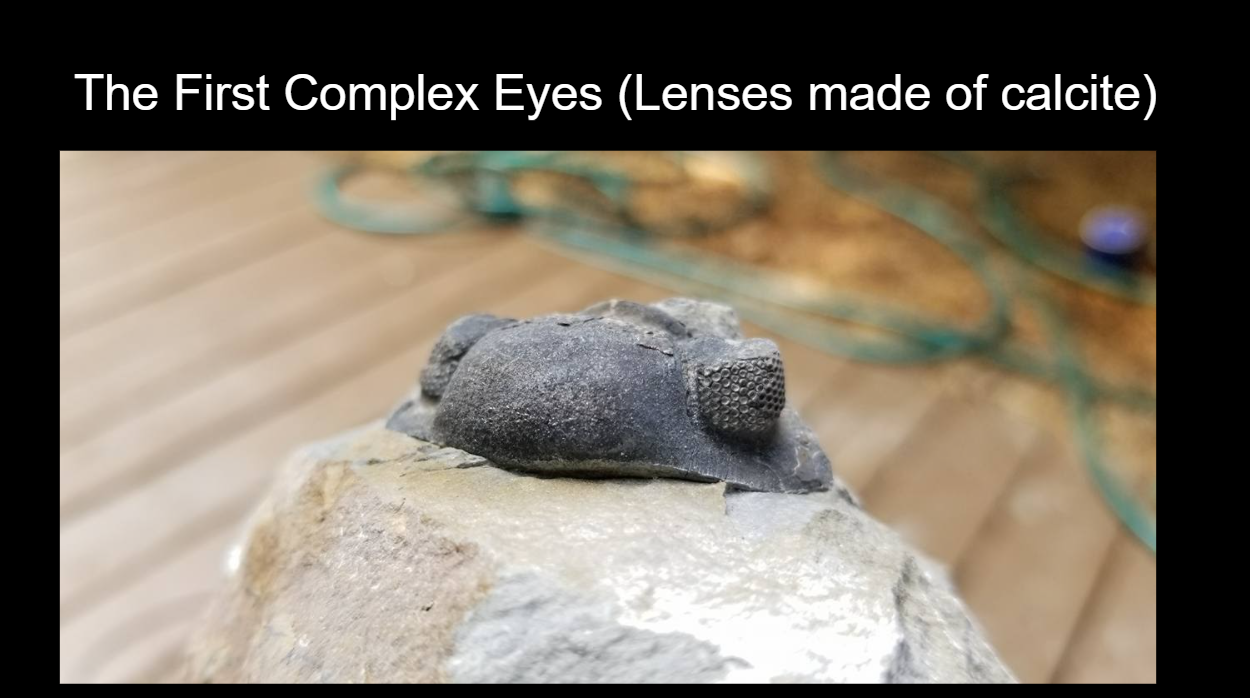
An intriguing aspect of trilobite eyes is that their multifaceted lenses were unique in that they were made of calcite which enabled their external visual system to survive for millions of years along with the rest of their exoskeleton. This is unique in the fossil record for aquatic or terrestrial forms of life. Additionally, instead of having two eyes like humans and animals, many trilobite varieties had more, sometimes even thousands of eyes, as noted below for the three main types of trilobite visual systems shown below.
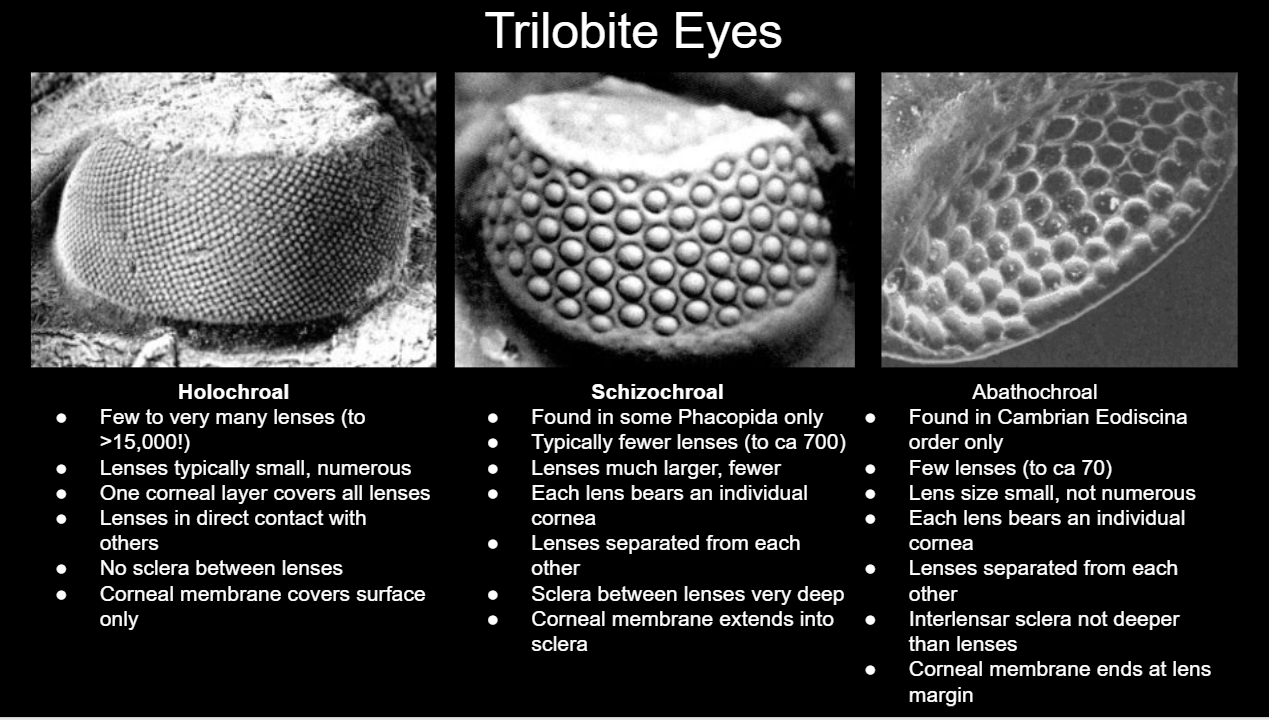
Another interesting aspect of trilobite evolution was their mouth. “They were bottom feeders,” Casper noted and there is evidence the shape of their mouth also evolved over time.
Popular Collecting Locations
Trilobite fossils are found in an extraordinarily large number of sites throughout the world, from Morocco to North America, Asia, and beyond.
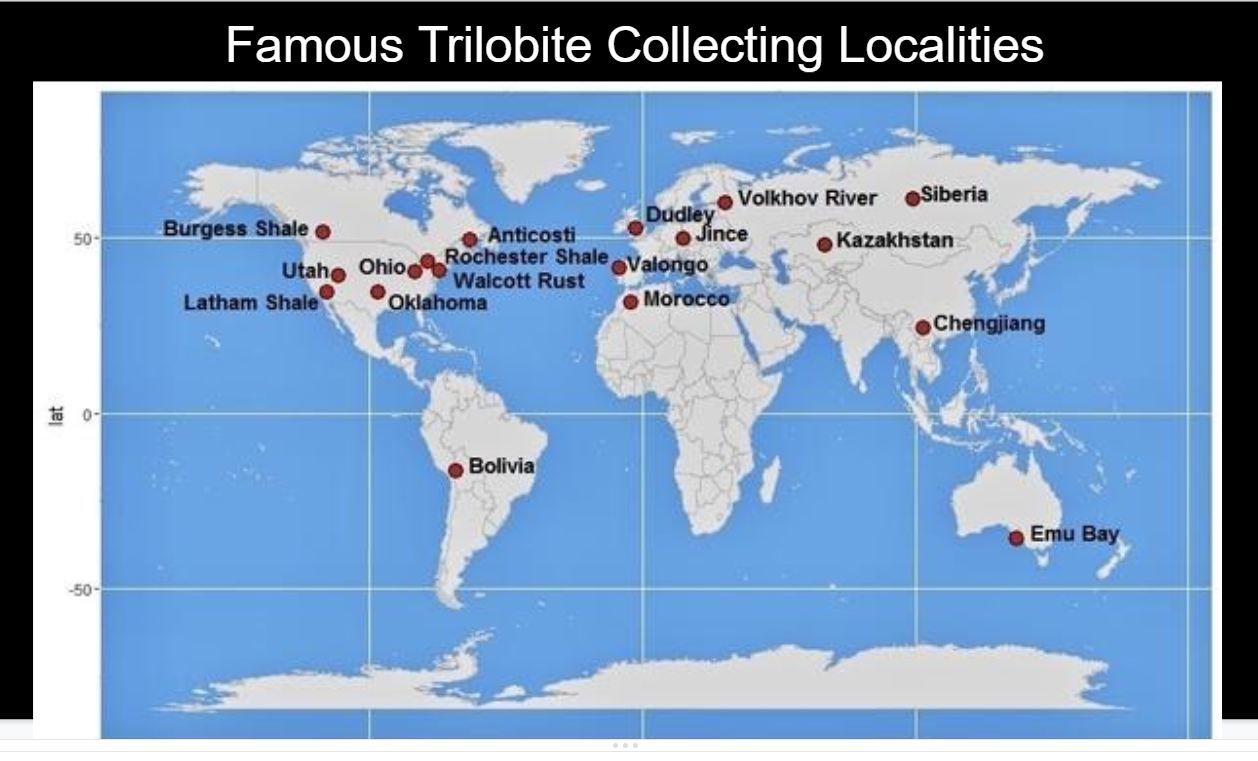

Casper described numerous popular trilobite collecting sites and showed specimens found throughout the U.S. He highlighted Herkimer County’s Walcott Rust Quarry, which, he said, is particularly rich in diverse Devonian trilobites, as shown below.
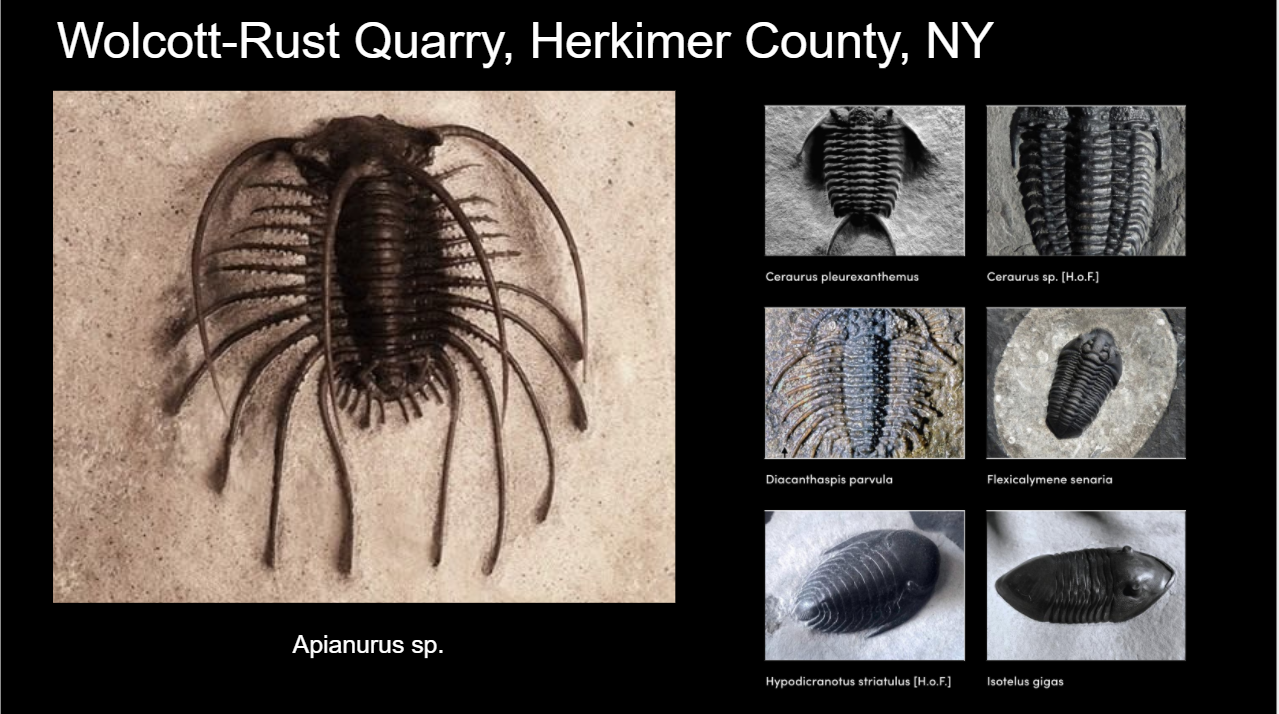
Also in western NY state is the Penn Dixie dig site whose popularity is well earned.
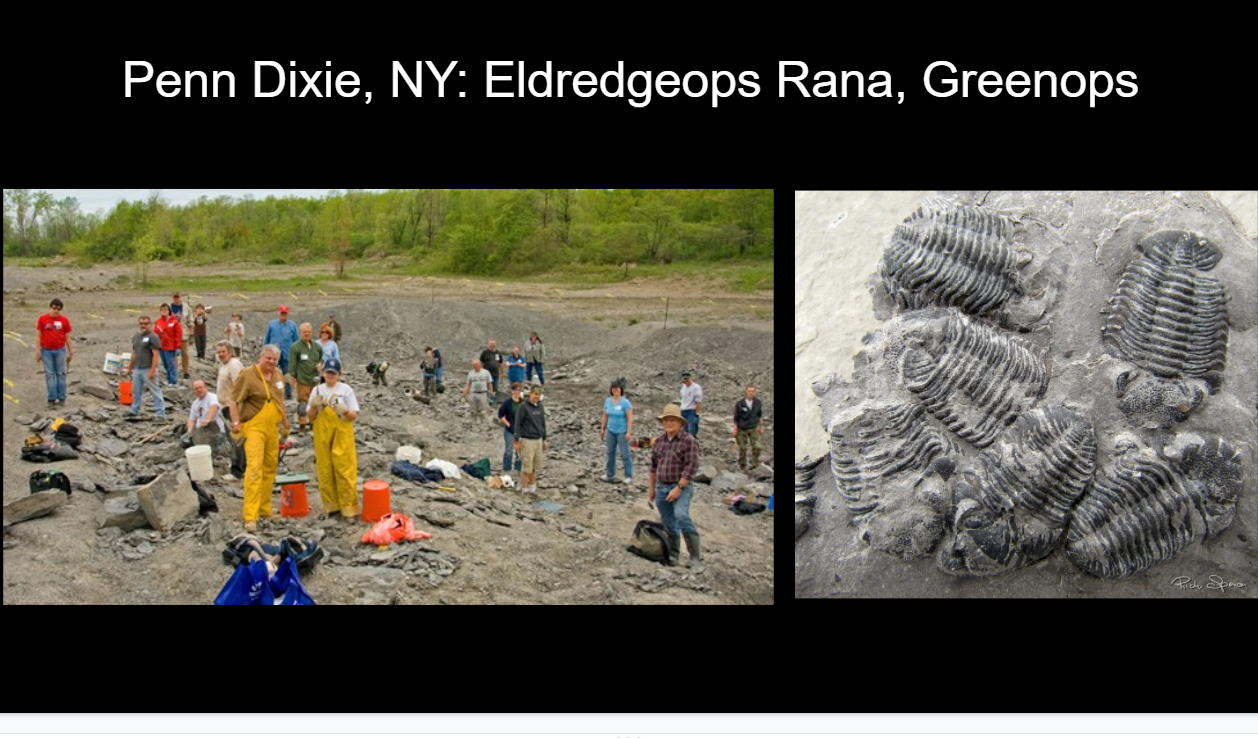
Casper’s favorite collecting site, however, is in the Capon Bridge area of West Virginia, highlighted on the geologic map shown below. The convergence of the illustration’s two red lines identifies that region. The map is color coded and the deep blue tints most of the eastern edge of the state of West Virginia signifying it is the domain of the Devonian Period. Casper has been collecting there for a decade and says when he is successful at finding specimens, they are excellent examples of Devonian trilobites.
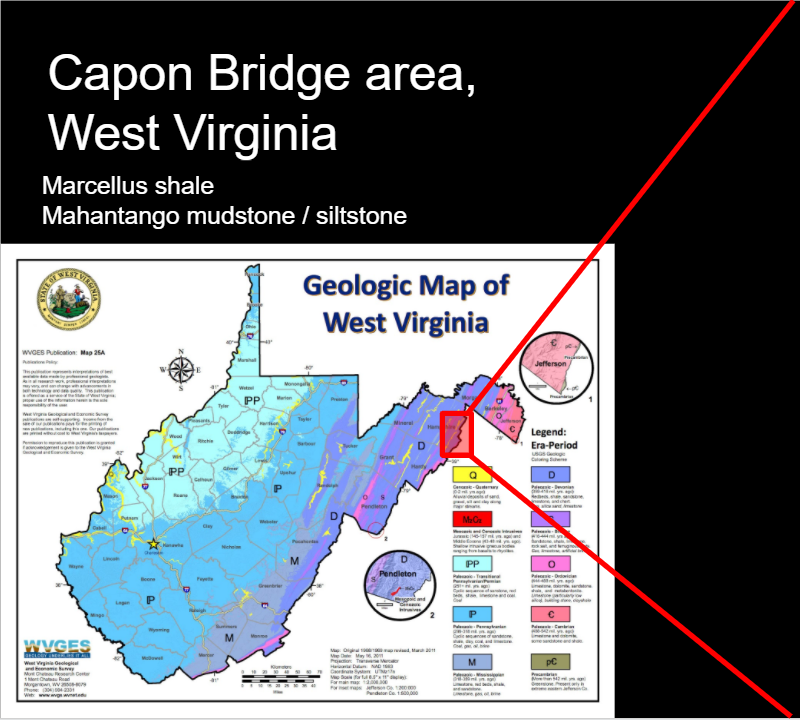
Below is a self-portrait of Casper. In the background is some of the fruit of his labor, the remains of a once very large rock which he encouraged to disclose its true identity as a secret resting place for trilobite fossils.
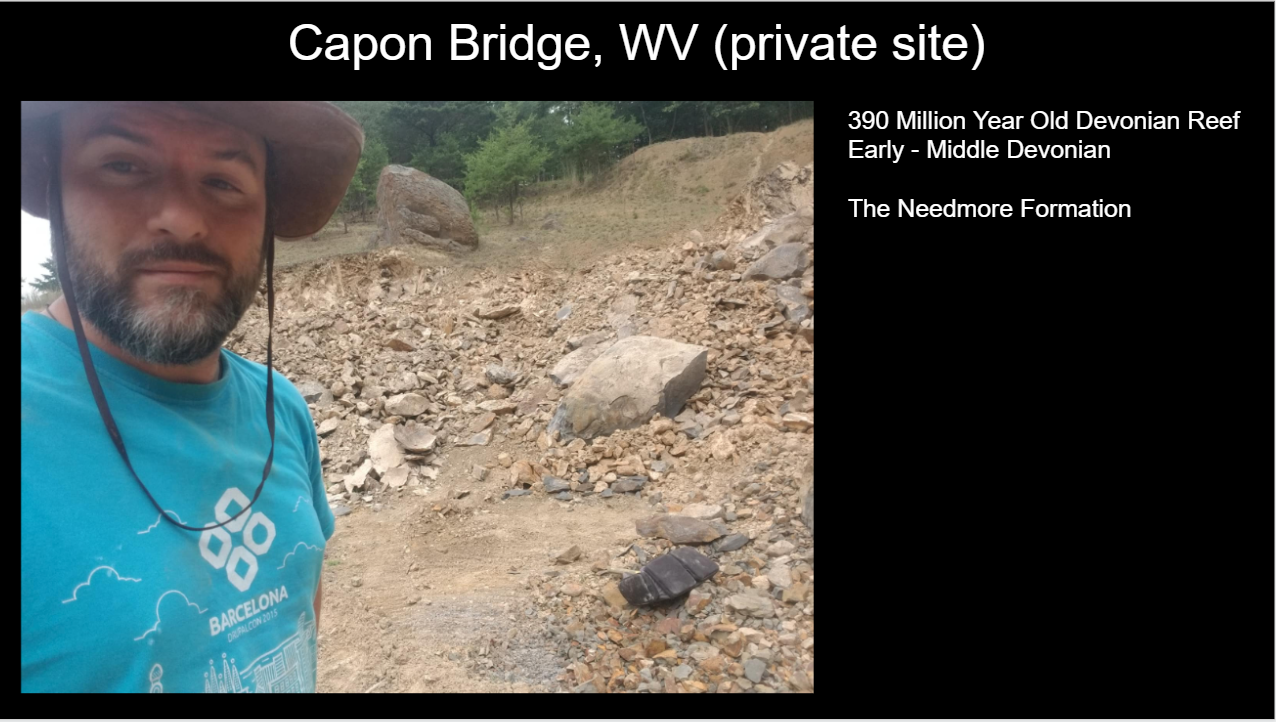
The journey from the quarry to the showcase is illustrated in the following two slides which suggest the need for the careful application of a lot of elbow grease and use of a stiff wire brush and other cleaning instruments to bring out the fine details of his trilobite discoveries.
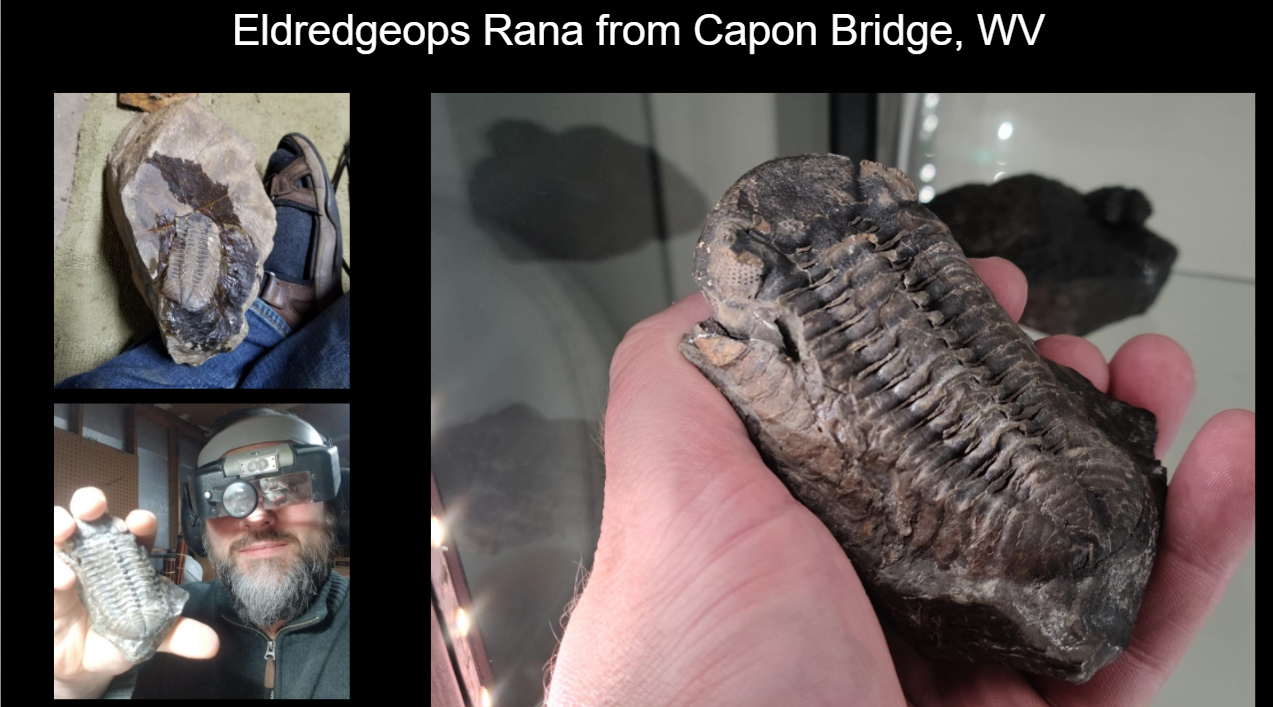
The white arrows in the following slide point to the positive results of Casper’s labor of love.
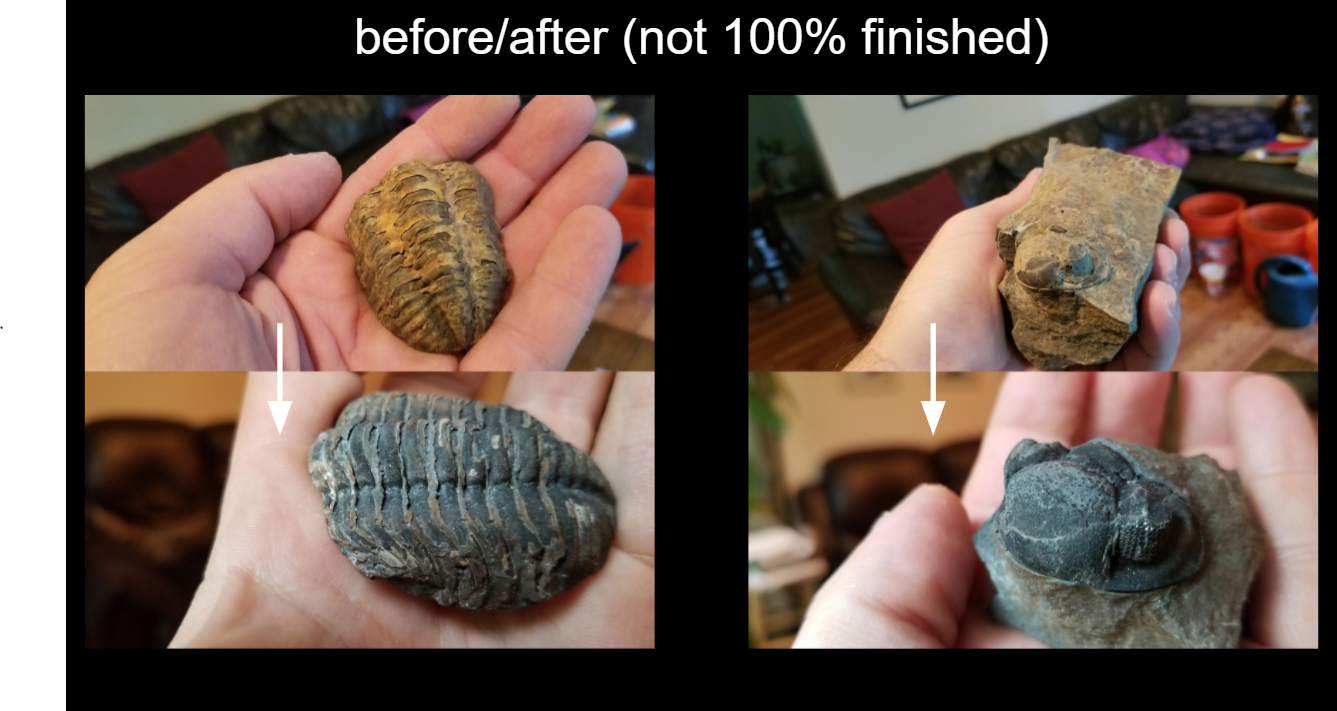
Diverse Physical Forms
One of the amazing aspects of immersion into the trilobite world is the diversity of physical forms trilobites have developed during their evolutionary journey. The following slide is but one of many Casper showed his audience. And that diversity, he said, raises interesting questions about what environmental circumstances could have been associated with these physical changes.
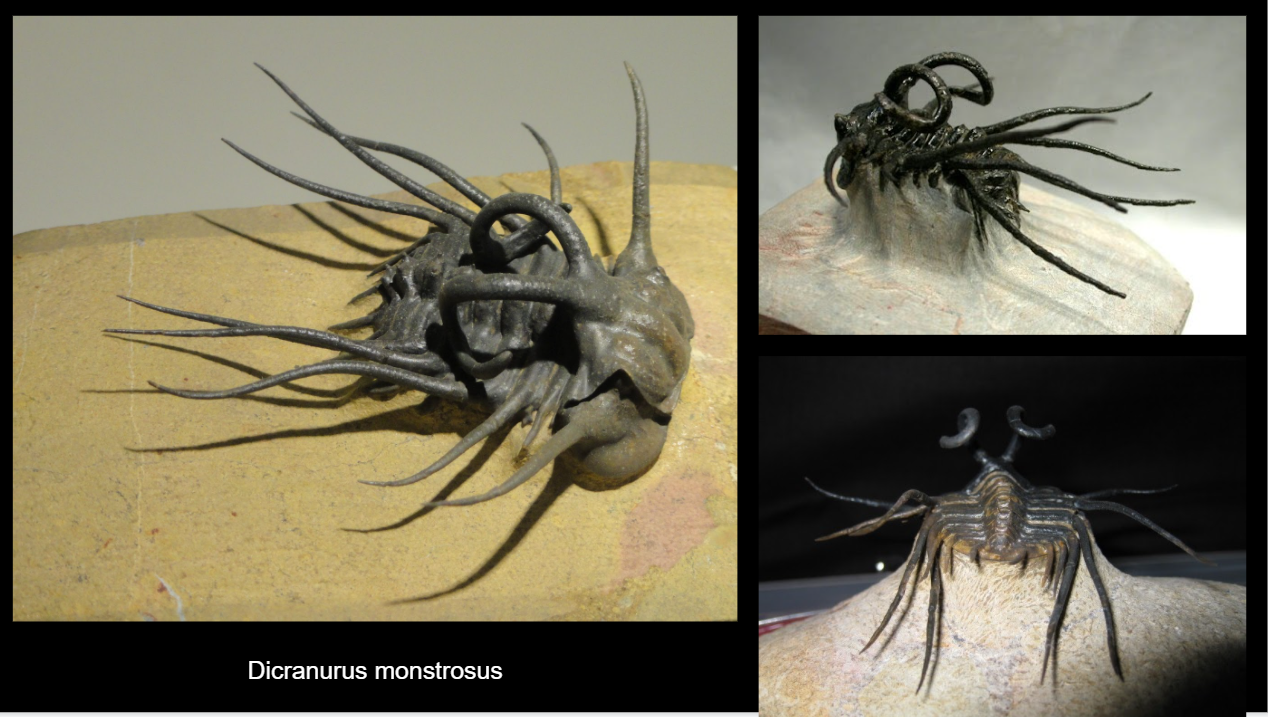
Even more puzzling is what could have brought about their ultimate demise, given that trilobites (red line below) have been extinct for 248 million years and which happened before the appearance of mammals and birds.
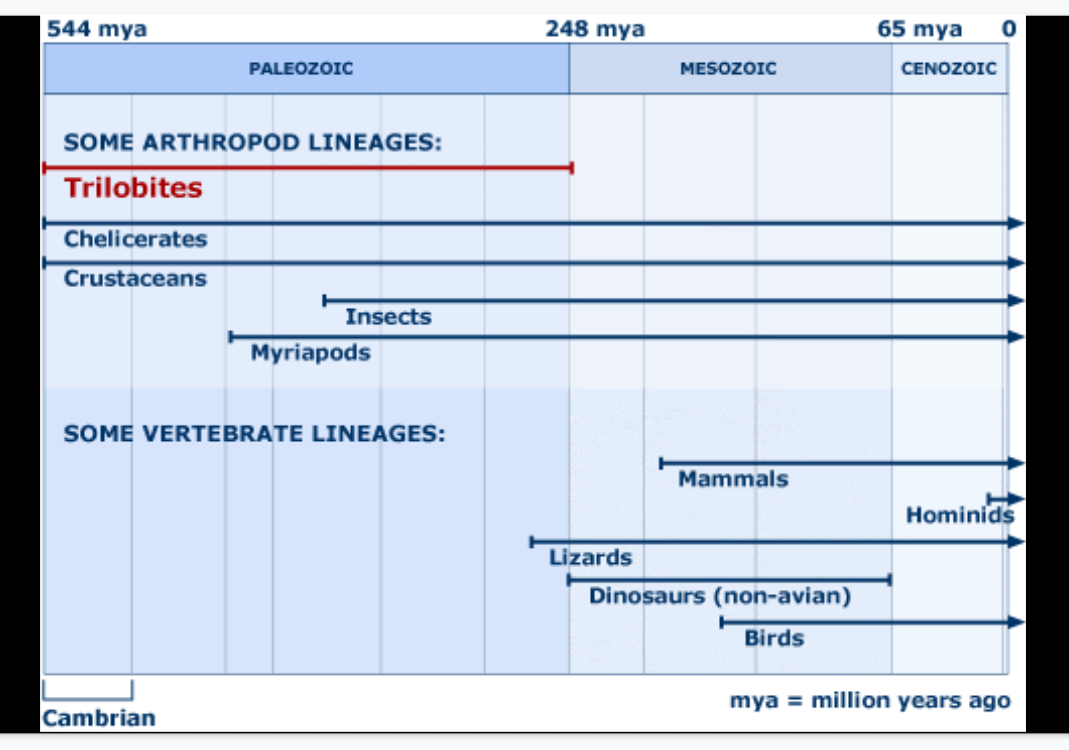
Casper noted that scientists have discussed the possible conditions which may have contributed to this massive Permian extinction event, including dramatic changes in the temperature of earth’s surface waters, changes in the carbon cycle associated with volcanic activity and an increase in methane gas due to the expansion of the microbe populations. The following slide points to additional possible causes.
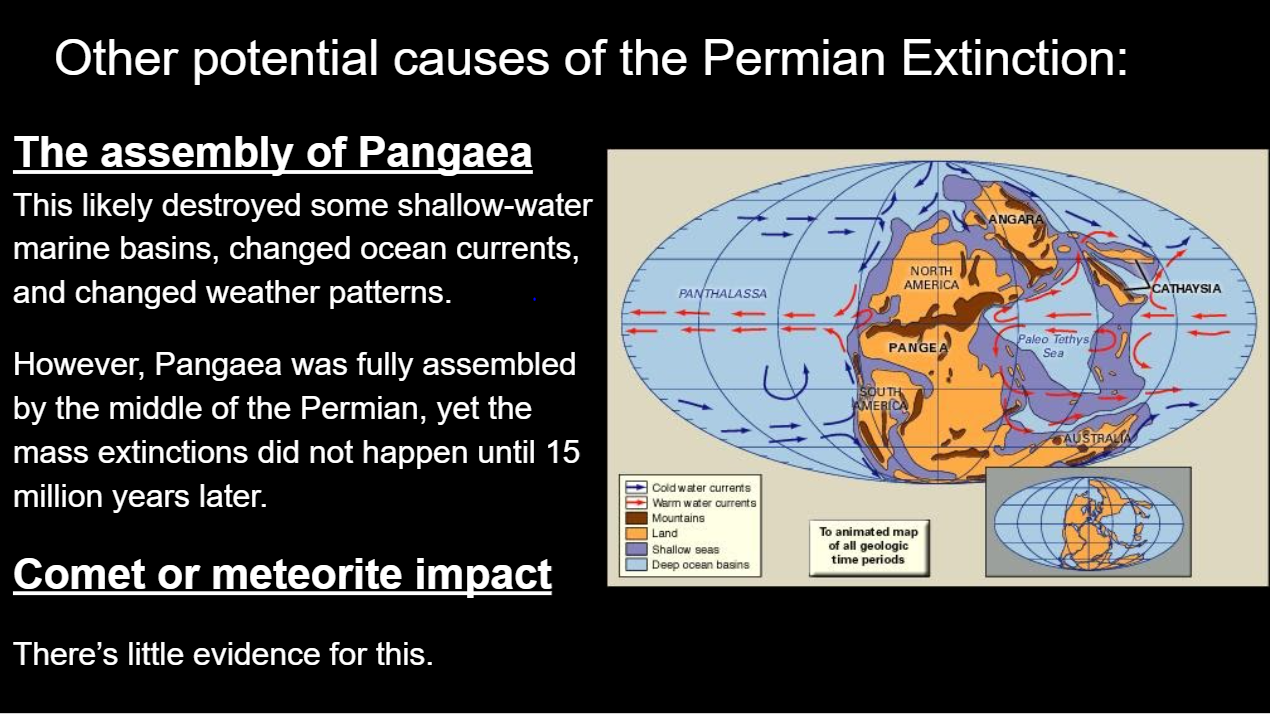
Casper concluded his presentation by sharing photos of additional trilobite specimens he has personally collected during his years of exploration. Closing out his formal presentation from Portugal, he mentioned that some of the specimens found there were about a yard’s length from head to tail and were the largest found anywhere in the world. We will have to wait for his return to the States to see if he happened to personally encounter any of those rare gigantic Portuguese specimens.
Yury thanked Casper for his wonderful presentation and his Zoom audience joined in with enthusiastic applause. Casper then fielded many questions from his audience.
(Readers who want to view Casper’s entire slide presentation can see it at: https://tinyurl.com/trilobites-presentation. He gave a special thanks to “trilobites.info” and “amnh.org” as the source of many of his explanatory graphics.)
Footnote
When Casper did return to the States he reported he had indeed encountered some of the famous Portuguese giant trilobites. He found them displayed in the trilobite museum located in the metro area of Porto, the country’s second largest city. He provided the following link for those interested in visiting that site: https://museudastrilobites.pt/en/. If you want to travel to there to see it in person, its name is “Centre of Geological Interpretation of Canelas” located southwest of Porto at Lugar de Cima 4540-252. Canelas – Arouca, Portugal.
